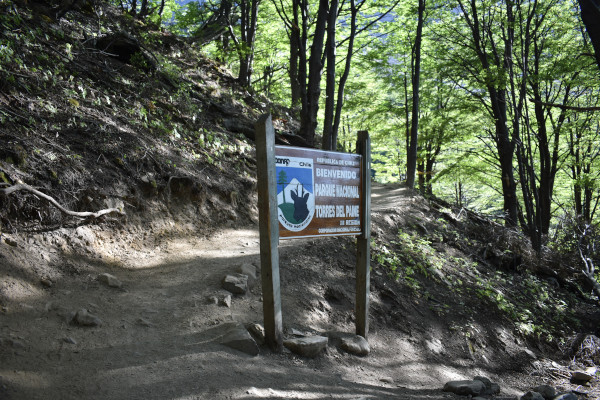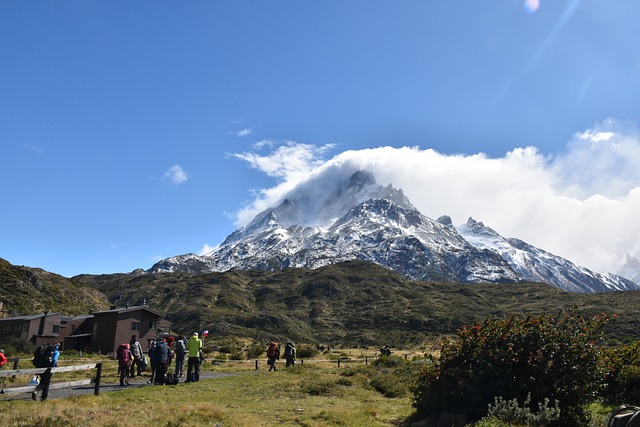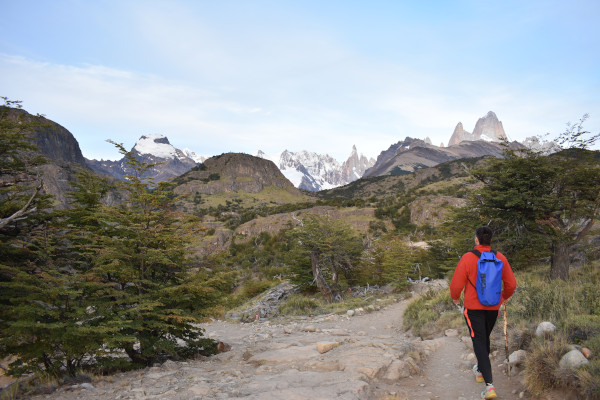If you are visiting Patagonia, you are undoubtedly planning on doing some of the region's famous treks. Many companies offer guided tours however, hiking Patagonia without a guide is completely manageable. In fact, I highly recommend it!
Self-guided treks give you more freedom on the trail and won’t cost a fortune. In this article, I’ll discuss the top reasons to trek independently. I also look at a few circumstances when booking a tour is necessary. Finally, there are some tips for hiking Patagonian trails on your own.
Can You Hike Patagonia Without A Guide?
If you are wondering if you can do hikes in Patagonia without booking a tour, the answer is yes! Not only is it possible to hike in Patagonia without a guide, it also has a lot of perks.
Below I’ve outlined the benefits of hiking unguided in Patagonia. For Fairness' sake, I’ve also included some reasons why you should book a few guided treks in Chile and Argentina.
Why You Don’t Need A Guide To Hike In Patagonia
1. The Trails Are Well Marked
The trails in Patagonia are clearly marked. The pathways are exceptionally well maintained with good signage at regular intervals. Most parks have an information office at the entrance where you can get maps and advice about the trail.
If you are hiking trails in Torres Del Paine, you will have no problem finding your way around. There are several ranger stations along the route to keep you moving in the right direction.

Good signage on the trails in Torres Del Paine
I found that even the lesser-known trekking routes are clearly defined. However, it never hurts to download offline maps. Wikiloc has one of the most extensive databases of trails all over the world. You will also find most routes on Google Maps.
2. There are Usually Lots Of Other Hikers On The Trail
Solo hiking is one of my favorite things to do and I don’t always appreciate seeing groups of other people on the trail. However, having other hikers around can be a good good thing.
For a start, you will never get lost. If in doubt, you can ask or follow the people around you. Even if you can’t see people, you will often find clear tracks or be able to figure out which pathway has been used more.
The most important benefit of busy trails is safety. If, in the worst-case scenario, there is an injury or emergency, help is never far away.
3. Guided Hikes In Patagonia Are Expensive
If you are backpacking through Patagonia, you are probably on a reasonably tight budget. This is often the main motivating factor to hike without a guide.
Official trekking tours charge a fortune. For example, the O Trek in Torres Del Paine will cost you a minimum of $800 to do with a reasonable company. If you and your friends arrange your own trek, you will spend less than half of that amount.
If you are prepared to spend some time planning, it’s much cheaper to trek unguided in Patagonia.
Should You Consider A Guided Hike In Patagonia?

Groups of hikers on their way to explore the trails in Torres Del Paine
1. Is Your Travel Style All-Inclusive?
If you like things to be arranged, start to finish, It might be better to book a guided tour. Tour operators take care of travel arrangements as well as equipment. Most full-day tours and treks also include meals. Booking a tour takes the stress out of planning your Patagonia trekking adventure.
2. Guides A Wealth Of Information
If you hike without a guide, you miss out on an abundance of knowledge. A good guide can tell you about the animals, plants, and history of the area, amongst other things.
Guides are great storytellers. They have a way of bringing the landscape alive for their guests. Local guides often have interesting tales or nuggets of information that just can't be found in a book or internet search.
3. Some Attractions Are Only Accessible With A Guide
Although most of Patagonia's major attractions are reachable without a tour, there are a few places you can only see with a guide. These are mostly treks and glaciers with some level of technical difficulty to reach. You may need special equipment like crampons to walk on the ice.
The Exploradores Glacier outside Puerto Rio Tranquilo is one such attraction where a guided tour is mandatory.
You will also need a guide if you plan to do the trek in Torres Del Paine over winter. Between April-October falls outside the trekking season. Most of the longer trails, including the W Trek and Full Circuit Trek, are not open to the general public and it is necessary to book a guide. Honestly, these cold months are not the ideal time to hike in Torres Del Paine.
Click here for more info on when to hike in Torres Del Paine.
Arranging Transport For Patagonia Hikes Without A Tour
If you are not taking a guided tour, you will need to make your own arrangements to get to the trails. Luckily, many hikes, Including the Fitz Roy Trek in El Chalten, start directly at the edge of town.
Renting a car is the best option to travel to Patagonia independently. If you cannot afford a car rental, it is often possible to catch a bus to the park or trailhead.
A final option for getting to the start of the trail is to try hitchhiking. This works well while backpacking Patagonia, particularly along Chile’s Carretera Austral which is the region's only major road.
Be Safe Out There: Precautions For Hiking Without A Guide
Follow these basic rules for trekking unguided in Patagonia:
Tell People Where You Are Going
Inform the accommodation owner of what trail you are taking and what time you will be back. This is particularly critical if you are hiking solo.
Take A Basic First Aid Kit
This includes any allergy medicine you need as well as items like inhalers if you use them. A basic first aid kit should have Band-Aids, antiseptic wipes, gauze pads, anti-bacterial ointment, and bandages.
Don’t Stray Off The Trail
Stick to the designated pathways. Other than causing environmental damage, leaving the trail could have some serious consequences.
It is easier than you think to get disorientated in the Patagonian forests and mountains. Plus, if something happens, It’s easier to be found if you are on the official pathway.
Pack Snacks And Other Essentials
If you are out longer than expected, hunger can worsen fatigue. Things can go wrong quickly when you are not thinking straight! You should also carry extra sunscreen and a cap because sunstroke is no joke.
Stay Hydrated
Even when it’s cold, you still need to drink plenty of water. Luckily, there are plenty of fresh glacial streams in Patagonia. You can usually fill up your bottle at regular intervals.
More Patagonia articles...

